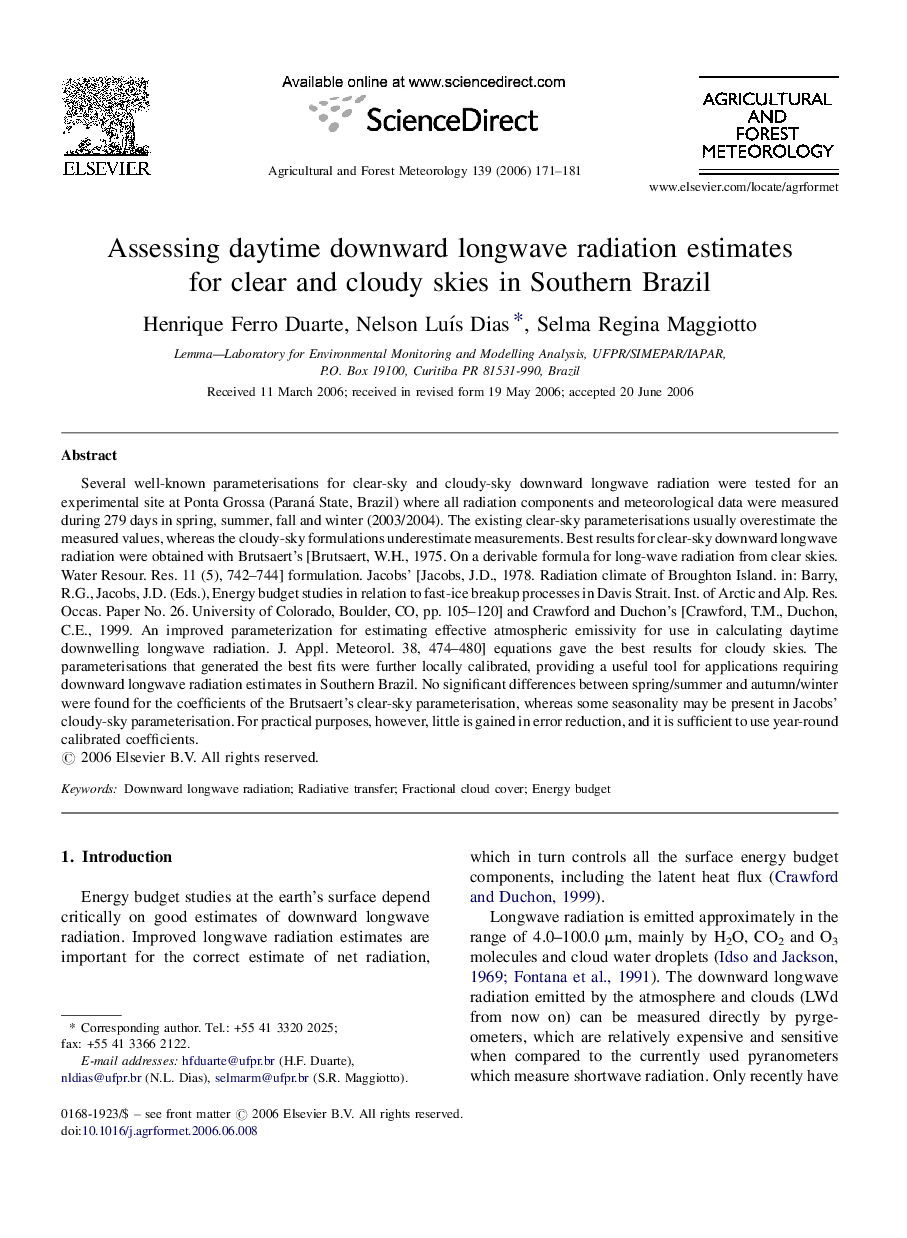| Article ID | Journal | Published Year | Pages | File Type |
|---|---|---|---|---|
| 82963 | Agricultural and Forest Meteorology | 2006 | 11 Pages |
Several well-known parameterisations for clear-sky and cloudy-sky downward longwave radiation were tested for an experimental site at Ponta Grossa (Paraná State, Brazil) where all radiation components and meteorological data were measured during 279 days in spring, summer, fall and winter (2003/2004). The existing clear-sky parameterisations usually overestimate the measured values, whereas the cloudy-sky formulations underestimate measurements. Best results for clear-sky downward longwave radiation were obtained with Brutsaert's [Brutsaert, W.H., 1975. On a derivable formula for long-wave radiation from clear skies. Water Resour. Res. 11 (5), 742–744] formulation. Jacobs’ [Jacobs, J.D., 1978. Radiation climate of Broughton Island. in: Barry, R.G., Jacobs, J.D. (Eds.), Energy budget studies in relation to fast-ice breakup processes in Davis Strait. Inst. of Arctic and Alp. Res. Occas. Paper No. 26. University of Colorado, Boulder, CO, pp. 105–120] and Crawford and Duchon's [Crawford, T.M., Duchon, C.E., 1999. An improved parameterization for estimating effective atmospheric emissivity for use in calculating daytime downwelling longwave radiation. J. Appl. Meteorol. 38, 474–480] equations gave the best results for cloudy skies. The parameterisations that generated the best fits were further locally calibrated, providing a useful tool for applications requiring downward longwave radiation estimates in Southern Brazil. No significant differences between spring/summer and autumn/winter were found for the coefficients of the Brutsaert's clear-sky parameterisation, whereas some seasonality may be present in Jacobs’ cloudy-sky parameterisation. For practical purposes, however, little is gained in error reduction, and it is sufficient to use year-round calibrated coefficients.
